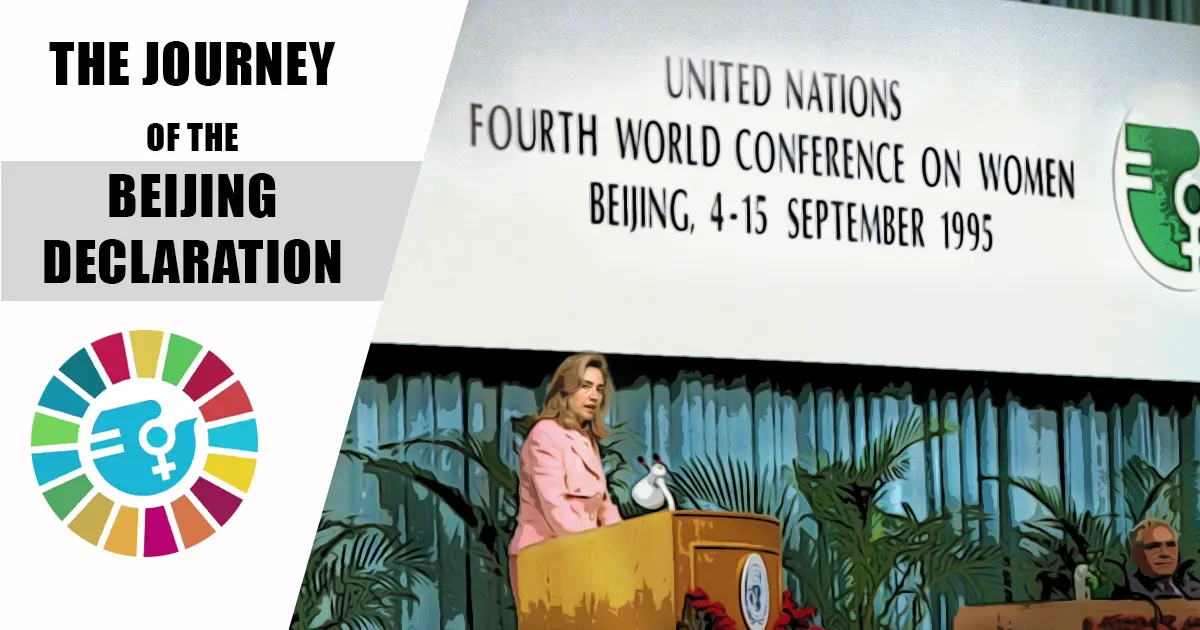
Context:
The 1995 Beijing Declaration and Platform for Action was a landmark achievement in the global movement toward gender equality, culminating from decades of advocacy and activism by women’s rights organizations.
Current Status of Women and Challenges
- Gender Inequality: The COVID-19 pandemic worsened existing gender disparities, as highlighted in a 2020 UN report.
- Representation Gaps: Women account for only 25% of global political leadership roles, showcasing their underrepresentation in decision-making positions.
- Educational Disparities: Although there has been progress in female education, significant gaps persist in terms of access and quality, particularly in low-income regions.
- Climate Change Impact: Women in rural areas face heightened vulnerabilities to climate change yet are often excluded from environmental decision-making.
- Poverty and Gender: Women in poverty experience dual disadvantages—gender discrimination and economic instability—and are often relegated to precarious, low-paying jobs.
- Healthcare Challenges: Women’s health remains at risk due to inadequate access to reproductive healthcare and other essential services.
- Conflict and Violence: During armed conflicts, women and girls are at greater risk of violence and exploitation.
- Economic Inequality: Gender-based discrimination limits women to low-wage, unstable employment, hindering their economic advancement.
- Institutional Barriers: Many countries lack robust institutional frameworks to promote and enforce gender equality policies.
Historical Roots of Women’s Movements
- Seneca Falls Convention (1848): This was the first women’s rights convention in the U.S., asserting gender equality.
- Suffragette Movement: A worldwide campaign advocating for women’s voting rights during the 19th and 20th centuries.
- Simone de Beauvoir’s The Second Sex (1949): Questioned traditional gender roles, introducing the concept of gender as a societal construct.
- Betty Friedan’s The Feminine Mystique (1963): Highlighted the oppression of housewives, catalyzing the establishment of the National Organization for Women and reforms such as the Equal Pay Act (1963) and Civil Rights Act (1964).
- Women’s Strike for Equality (1970): Mobilized 50,000 women in the U.S. to demand equal rights.
Beijing Declaration and Platform for Action (1995)
- Event: The Fourth World Conference on Women held in Beijing in September 1995 led to the adoption of the Beijing Declaration and Platform for Action, addressing critical global gender equality issues.
Key Objectives of the Declaration:
- Global Equality: Promote equality, peace, and development for women.
- Educational Access: Ensure free and quality education for women and girls.
- Eradicating Violence: Combat violence against women through policies, programs, and awareness campaigns.
- Leadership Representation: Advocate for increased women’s participation in leadership roles.
- Human Rights: Establish women’s and children’s rights as fundamental human rights.
Core Aspects of the Platform for Action:
- Comprehensive Participation: Empower women to engage fully in economic, social, cultural, and political spheres.
- Legal and Social Freedoms: Ensure access to education, freedom from violence, and equal pay for equal work.
- Gender Parity in the UN: Strive for 50% representation of women in UN decision-making roles by 2000.
Impact of the Beijing Declaration
- Environmental Leadership: Encouraged women’s involvement in environmental governance, particularly conservation initiatives.
- Political Representation: Led to gender quotas and increased female representation in politics, especially in Latin America and Southern Africa.
- Health Advancements: Promoted initiatives that improved women’s health, reduced the spread of HIV/AIDS, and enhanced maternal health.
- Educational Progress: Significant strides were made toward educational parity for girls, particularly in developing countries.
Key Milestones in Women’s Activism in India
- Recent Government Initiatives: Programs like Beti Bachao Beti Padhao and Pradhan Mantri Matru Vandana Yojana focus on improving gender equality.
- Legal Protections for Women:
- Protection of Women from Domestic Violence Act (2005): Safeguards women against various forms of abuse.
- Dowry Prohibition Act: Criminalizes dowry practices.
- Maternity Benefits Act: Provides paid maternity leave for working women.
- Equal Remuneration Act (1976): Ensures equal pay for men and women doing similar work.
- Sexual Harassment at Workplace Act (2013): Protects women against workplace harassment, inspired by the Vishaka Guidelines.
Gender Mainstreaming as a Solution
- Definition: Gender mainstreaming integrates gender perspectives into the planning, design, implementation, and evaluation of policies to ensure equality and eliminate discrimination.
- Approach: Policies are crafted with a gender lens, ensuring inclusive representation and responsive content.
Challenges in Implementation:
- Lack of Political Will: Political apathy toward gender issues slows progress.
- Insufficient Resources: Limited funding hampers the implementation of gender-responsive policies.
- Cultural Barriers: Patriarchal norms in many societies obstruct the adoption of gender-sensitive measures.
Benefits of Gender Mainstreaming:
- Equality Promotion: Ensures that gender considerations are integral to decision-making, resulting in more inclusive policies.
- Improved Outcomes: Gender-responsive measures yield better results for both women and men, fostering balanced development.
- Women’s Empowerment: Directly addresses representation and reduces discrimination.
Way Forward: Achieving Gender Equality
- Commitment: National governments and global entities must prioritize gender equality, enforce laws, and allocate resources effectively.
- Intersectionality: Policies must address the unique challenges faced by women at the intersections of race, class, and ethnicity.
- Support for Women’s Organizations: Strengthen civil society and grassroots initiatives to sustain momentum for change.
- Education and Health: Prioritize equal access to education and healthcare.
- Engaging Men: Encourage men’s active participation in dismantling patriarchal norms and achieving gender equality.
- Combatting Violence: Advocacy and legal reforms must continue to address violence against women and girls.
[box] Trace the evolution of women’s rights movements globally, emphasizing the significance of the 1995 Beijing Declaration and Platform for Action. Discuss the current challenges in achieving gender equality and suggest measures to ensure effective implementation of gender-responsive policies.
[button color=”purple ” size=”medium” link=”https://forms.gle/Wzz7M6oVE4bQS8Ws8″ icon=”” target=”true”]Upload Answer[/button]
[/box]




